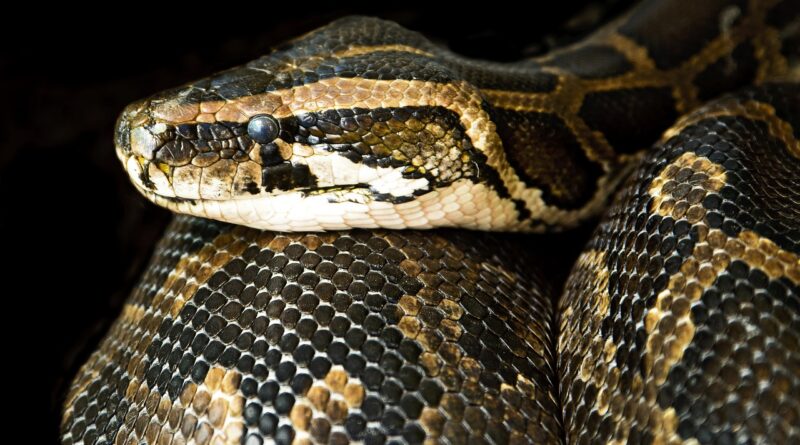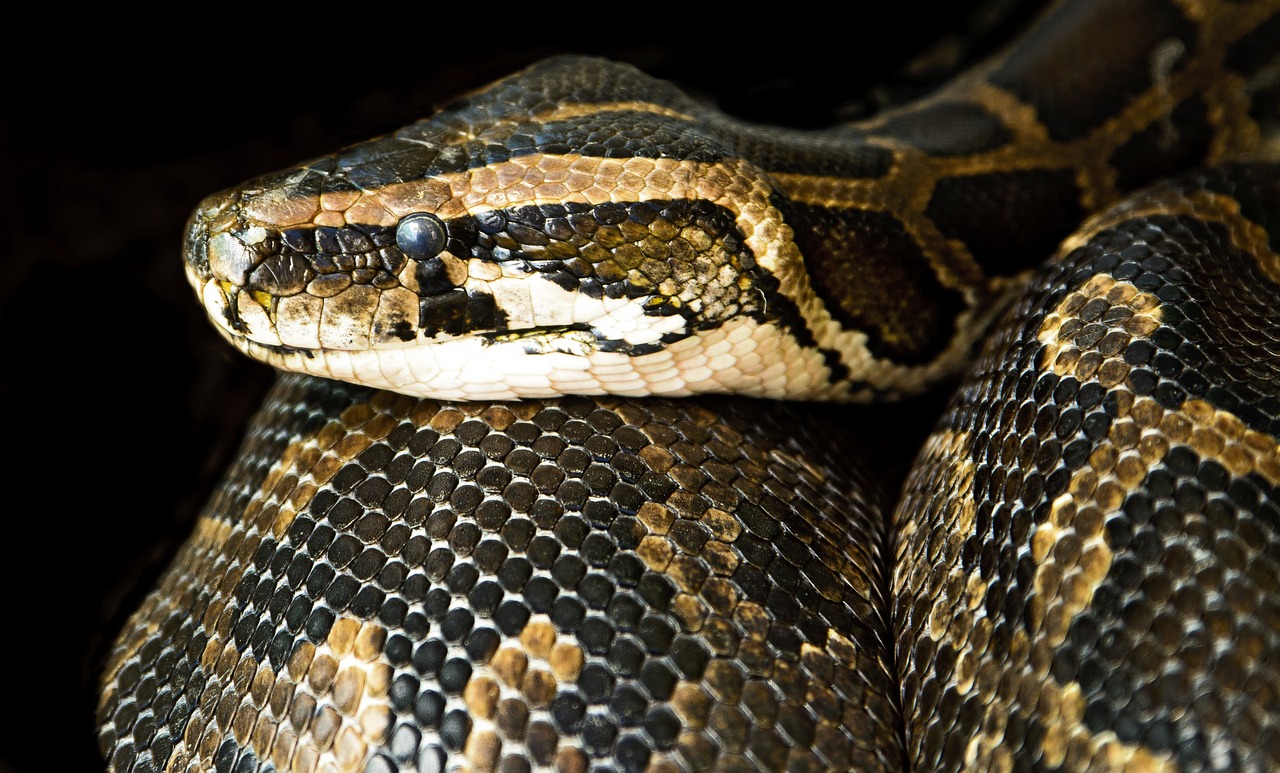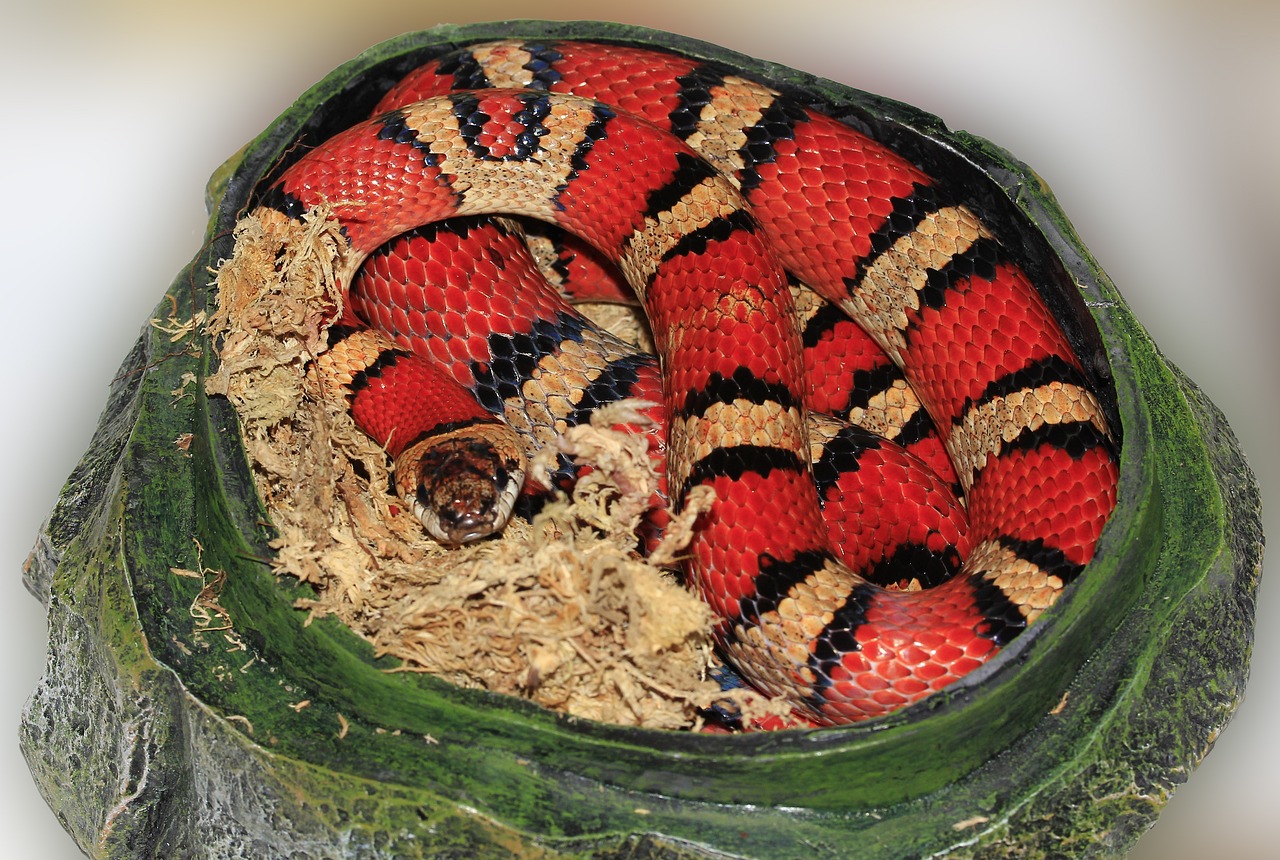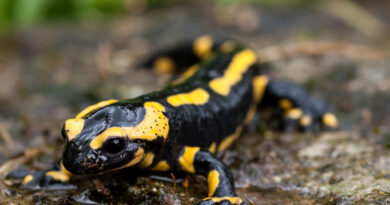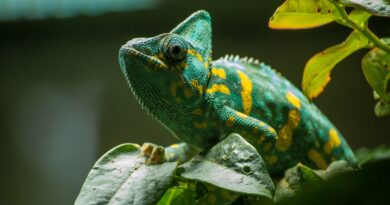What Are The Best Snakes As Pets
What Makes a Good Pet Snake?
When it comes to owning a pet snake, there are certain characteristics that make some species more suitable than others. While snakes may not be the first choice for everyone seeking a loyal and cuddly companion, they do have unique qualities that can make them fascinating and low-maintenance pets. So, what exactly makes a good pet snake?
First and foremost, an ideal pet snake should have a calm temperament. While snakes are not inherently aggressive, some species are naturally more docile and friendly than others. Beginners should look for snake breeds that are known to be easy-going and less likely to bite, such as corn snakes or ball pythons. These species are generally more tolerant of handling and make excellent pets for first-time snake owners.
Another crucial aspect to consider is the snake’s size. Different species of snakes can vary greatly in length, with some reaching impressive sizes of over 20 feet, while others remain small, rarely exceeding a few feet. For most pet owners, a smaller snake will be much more manageable and practical in terms of housing, feeding, and overall maintenance. Popular small snake breeds include milk snakes, king snakes, and garter snakes.
Feeding habits are also an important factor to take into account. Some snakes, such as ball pythons, require less frequent feedings, only requiring one meal every few weeks. This can be advantageous for those who have a busy lifestyle or travel frequently. On the other hand, snakes like corn snakes or king snakes may need to be fed more often, typically every week or two. Understanding a snake’s feeding requirements and being able to provide the necessary diet is crucial to its overall well-being.
When it comes to housing, a good pet snake will thrive in a suitable enclosure. Snakes require an appropriate terrarium or vivarium with a good heat lamp that offers enough space for them to move around comfortably. It should also provide the appropriate temperature and humidity levels to mimic their natural habitat, as well as hiding areas and suitable substrate. Researching the specific requirements of a particular snake species is essential to ensure that you can create an appropriate and stimulating environment for your pet.
Finally, a good pet snake should be relatively easy to source from reputable breeders or pet stores. It is important to avoid wild-caught snakes as they may have health issues or be more susceptible to stress. Choosing a snake that has been bred in captivity ensures that it has been well-handled and is accustomed to its environment, making it easier to transition into your home and interact with humans.
Owning a snake can be a unique and rewarding experience for those interested in these mesmerizing creatures. By considering factors such as temperament, size, feeding habits, housing requirements, and availability, potential snake owners can make an informed decision and choose a pet snake that fits their lifestyle and preferences. With proper care and attention, a good pet snake can be a captivating companion that brings joy and fascination into your life.
Types of Snakes for Beginners
Snakes have long captured the fascination of humans, from their slithering movements to their intriguing patterns and colors. However, for beginners, the world of snakes can seem overwhelming and intimidating. With over 3,000 known species of snakes worldwide, it can be challenging to know where to start. Therefore, let’s delve into the world of snakes and explore some of the most common and beginner-friendly snake species.
1. Corn Snake: Corn snakes are one of the most popular pet snakes due to their docile nature and easy care requirements. With their striking patterns and vibrant colors, they make a captivating addition to any reptile lover’s collection. Corn snakes are relatively small, typically ranging from 3 to 5 feet in length, making them manageable for beginners.
2. Ball Python: Known for their gentle temperament and unique ability to curl up into a tight ball, ball pythons are another excellent choice for beginners. These snakes are relatively low-maintenance and can adapt to various environmental conditions. With their diverse morphs and calm demeanor, ball pythons have gained immense popularity among reptile enthusiasts.
3. California Kingsnake: California kingsnakes are hardy and adaptable, making them ideal for novice snake keepers. These snakes come in a variety of patterns, including striped, speckled, and banded, adding diversity to any collection. They are known for their robust appetite and ability to consume a wide range of prey. California kingsnakes are excellent hunters and can thrive in captivity with proper care.
4. Garter Snake: Garter snakes are widely distributed across North America and are one of the most common snake species. These snakes have slender bodies and are known for their distinct patterns, which can range from stripes to spots. Garter snakes have a gentle disposition and rarely attempt to bite, making them suitable for handling.
5. Rosy Boa: Rosy boas are small and easily manageable, making them suitable for beginners. They have a calm temperament and do not require large enclosures. Rosy boas come in various colors, such as albino, hypo, and wild-type, allowing snake enthusiasts to choose one that suits their preferences. With adequate heating and a proper diet, these snakes can thrive in captivity.
6. Gopher Snakes: Gopher snakes, also known as bullsnakes, are a great choice for novice snake keepers. These nonvenomous serpents are native to western North America and come in a variety of colors. Gopher snakes grow up to three meters (10 feet) long, making them one of the largest species of snake available as pets. They have docile temperaments and handle well, making them an ideal choice for those who want to experience the thrill of owning a large snake.
7. Western Hognose Snakes: Western hognose snakes are small, nonvenomous snakes native to the United States and Canada. Their unique upturned nose gives them their distinctive name, and they come in a variety of colors and patterns. Western hognose snakes make great pets due to their gentle temperament, low maintenance requirements, and hardy nature. They rarely attempt to bite, making them ideal for handling by beginners.
No matter which species you choose, it’s important to do your research and ensure that the snake is a good fit for your lifestyle. With proper care and dedication, any of these beginner-friendly snakes can make a captivating addition to any reptile enthusiast’s collection.
While these snake species are generally considered beginner-friendly, it is essential to remember that each snake is an individual with unique needs and behaviors. Before acquiring any snake, beginners should research and understand the specific care requirements associated with that particular species.
Moreover, it is crucial to ensure proper husbandry practices are followed, including maintaining appropriate temperature and humidity levels, providing a suitable enclosure, and offering a well-balanced diet. Regular veterinary check-ups are also recommended to monitor the snake’s health and prevent any potential issues to ensure maintaining a healthy snake.
As beginners embark on their journey into the world of snakes, they can feel confident knowing that these species offer a great starting point. Remember, patience, dedication, and a genuine love for these magnificent reptiles will pave the way for a rewarding snake-keeping experience.
What Makes A Good Beginner Snake?
When selecting a beginner snake, there are several factors to consider. Firstly, it is important to choose a species with an amenable temperament and manageable size. Additionally, beginners should assess the required care level for each species before making a decision. A good beginner snake should have basic needs that can be easily met in captivity. Furthermore, potential health risks associated with each species should be taken into account when making a selection. Finally, beginners should take the time to research and understand the behavior of their chosen pet snake before bringing it home.
Here are two we thought would be great beginner snakes:
Corn Snakes
Corn snakes are one of the most popular pet snakes due to their vibrant colors, docile nature, and manageable size. These non-venomous snakes, scientifically known as Pantherophis guttatus, are native to the southeastern United States, primarily found in the cornfields, where they get their name. With their stunning patterns and variety of colors, ranging from bright oranges and reds to yellows and browns, these snakes are a treat for the eyes.
Size-wise, corn snakes are considered medium-sized snakes, with adult males typically reaching lengths of 3 to 5 feet, while females can grow slightly longer, measuring around 4 to 6 feet. Their size is one of the reasons why they are favored among snake enthusiasts as they are easier to handle and require less space compared to larger snake species.
One of the most significant advantages of owning a corn snake is their docile temperament. These snakes have a reputation for being easily tamed and are generally not aggressive. With proper handling and regular socialization, corn snakes quickly become accustomed to human interaction and rarely show signs of aggression. This friendly nature makes them an ideal choice for beginners as well as families with children.
Corn snakes are oviparous, meaning they lay eggs instead of giving live birth. This egg-laying process offers reptile enthusiasts the opportunity to experience the excitement of breeding corn snakes and hatching eggs if they desire to expand their collection. Through controlled breeding programs, breeders have created a diverse range of corn snake morphs, each with its unique and eye-catching color patterns.
Furthermore, corn snakes are generally hardy and resilient, making them less prone to illness and diseases compared to other reptiles. However, like any living creature, they require proper care and attention. It’s crucial to maintain the temperature and humidity levels within their enclosure and regularly monitor their overall health. Regular check-ups with a reptile veterinarian are recommended to ensure their well-being.
In conclusion, corn snakes offer snake enthusiasts an attractive, friendly, and manageable pet option. From their captivating colors and patterns to their docile temperament and ease of care, corn snakes are a favorite choice for those interested in owning a reptile companion. Whether you are a seasoned reptile owner or new to snake keeping, owning a corn snake can be a rewarding and enjoyable experience.
Physical Characteristics of The Corn Snake
• Color: Ranges from bright oranges and reds to yellows and browns, with a variety of morphs available.
• Size: Adult males typically reach lengths of 3 to 5 feet, while females can grow slightly longer, measuring around 4 to 6 feet.
• Temperament: Generally docile and not aggressive; can become accustomed to human interaction with regular socialization.
• Care: Easier to care for than most other snake species; requires a secure enclosure, hiding spots, and a regular feeding schedule.
• Breeding: Oviparous—lay eggs instead of giving live birth—offering the opportunity to breed and hatch eggs if desired.
• Health: Generally hardy and resilient; requires temperature and humidity regulation as well as regular check-ups with a reptile veterinarian.
Natural Habitat & Diet of The Corn Snake
Feeding corn snakes is relatively straightforward as well. They are constrictors that eat small rodents, such as mice and rats. Typically, adult corn snakes are fed every 1-2 weeks, while younger ones require more frequent feedings. It’s crucial to maintain a proper feeding schedule to ensure their health and encourage normal growth.
• Natural Habitat: Found in a variety of ecosystems, including forests, woodlands, and fields.
• Diet: Constrictors—feed on small rodents such as pinky mice, mice, and rats; adults are typically fed every 1-2 weeks while younger ones require more frequent feedings.
Behavior & Temperament of The Corn Snake
• Generally docile and not aggressive; can become accustomed to human interaction with regular socialization.
• Nocturnal—most active during the night and early morning hours.
• Will often bask in the warm sunlight of its enclosure during the day.
• Highly adaptable, making them suitable for a variety of living conditions.
Corn snakes make great pets due to their low-maintenance requirements and interactive behavior. Not only are they easy to take care of, but they also tend to be quite friendly with their owners if properly handled. To keep them in optimum health, it is important to provide a high-quality diet, secure enclosure and hiding spots, regular socialization, and check-ups with a reptile veterinarian.
Corn Snake Care Requirements
Corn snakes are also relatively easy to care for, making them an excellent choice for first-time snake owners. They can be housed in glass terrariums with secure lids that provide ample space for them to move around. It is essential to give them hiding spots, branches, and other accessories to create an environment that mimics their natural habitat.
• Enclosure: A secure enclosure with a tight-fitting lid, such as an aquarium, is needed to house these escape artists. The enclosure should be large enough for the snake to move freely and have areas to hide and explore. As corn snakes are semi-arboreal, it’s recommended to provide branches or climbing structures in their enclosure.
• Temperature & Humidity: The temperature inside the enclosure should range between 75-85°F (24-29°C), while the humidity should be kept at a moderate level of 40-50%.
• Substrate: Proper substrate is necessary to provide the snake with traction and insulation. Aspen shavings, Kenyan sand, newspaper, or reptile carpets are all excellent choices for corn snakes.
• Lighting: A low-watt age UVB bulb may be used to provide the snake with vitamin D3 and should be kept on for 10-12 hours a day.
• Feeding: Corn snakes should be fed small, appropriately sized prey items—such as pinky mice, mice, and rats—every 1-2 weeks. It is important to monitor the snake’s weight and adjust the feeding schedule accordingly
Availability & Cost of The Corn Snake
• Corn snakes are widely available in pet stores and online, as well as through reptile breeders.
• Prices vary depending on the morph or pattern of the snake but can range anywhere from $20-$200.
Ball Pythons
Ball pythons, scientifically known as Python regius, are one of the most popular pet snakes worldwide. Renowned for their docile nature and stunning appearance, ball pythons have been captivating reptile enthusiasts for years.
One of the distinctive traits of ball pythons is their ability to go for months without eating. This is a natural behavior known as brumation, which mimics a hibernation-like state and typically occurs during cool periods. Owners should not be alarmed if their snake refuses meals during this time.
Breeding ball pythons has become a popular practice among experienced keepers. Due to their diverse morphs, breeders have successfully produced an array of unique and visually striking offspring through selective breeding. However, breeding ball pythons requires a deep understanding of their care, reproductive behavior, and genetics.
In conclusion, ball pythons are fascinating creatures that make great pets for reptile enthusiasts of all levels. Their calm demeanor, striking appearance, and manageable size have contributed to their popularity as one of the most sought-after pet snakes. Whether you are a beginner or a seasoned enthusiast, a ball python can provide you with a rewarding and captivating experience in the world of snake keeping.
Physical Characteristics of The Ball Python
Originating from West and Central Africa, these snakes were named ‘ball’ pythons due to their defensive behavior of curling into a tight ball when threatened. They have slender, elongated bodies with a unique pattern that consists of brown or black blotches on a lighter background, which can be anywhere from pale yellow to dark brown. One of the most striking features of ball pythons is their spectrum of morphs, which includes various colors and patterns such as albino, piebald, and spider.
• Elongated body with a unique pattern consisting of brown or black blotches on a lighter background, which can be anywhere from pale yellow to dark brown.
• Small size–adult female usually reaches a length of 3-5 feet, while the males tend to be slightly smaller.
• Variety of morphs including albino, piebald, and spider.
• Nocturnal, spending most of their time hiding and resting in small, dark spaces.
Natural Habitat & Diet of The Ball Python
Ball pythons are mainly nocturnal, spending most of their time hiding and resting in small, dark spaces. It is essential to provide them with a secure and spacious enclosure that mimics their natural environment. A glass terrarium or a plastic enclosure with proper ventilation, appropriate heating, and a thermal gradient is vital for their well-being.
As carnivorous creatures, ball pythons feed on a diet of rodents, including mice and rats. They are constrictors, meaning they coil around their prey and squeeze until the prey dies of suffocation before swallowing it whole. It is crucial to provide appropriate-sized prey items according to the snake’s size, to avoid any issues during feeding.
Ball pythons live in a variety of habitats from the dry grasslands of West Africa to the rain forests of Central Africa. They are nocturnal, spending most of their time hiding and resting in small, dark spaces such as hollow logs or large rocks.
In terms of diet, ball pythons feed primarily on small mammals such as rats and mice. In captivity, they
Ball Python Behavior & Temperament
Having a reputation for being incredibly calm nature, ball pythons are an excellent choice for beginners and experienced reptile keepers alike. They are known for their calm temperament and rarely show aggression towards humans. However, it is important to note that their gentle nature can vary from individual to individual, and some may exhibit shy or skittish behavior.
Ball pythons are generally docile, non-aggressive snakes that make great pets. Despite their small size, they require secure enclosures to prevent them from escaping. They rarely bite and usually curl into a ball when threatened or stressed. Ball pythons are also solitary creatures and should not be housed with other snake species.
Due to their calm temperaments and manageable sizes, ball pythons make for ideal first-time pet snakes. They are also relatively low maintenance, requiring only a few hours of weekly care and attention.
Ball Python Care Requirements
While ball pythons may not be the largest species of snake, they are admired for their manageable size. An adult female usually reaches a length of 3-5 feet, while the males tend to be slightly smaller. This compact size enables owners to comfortably house these beautiful creatures in their homes.
Ball pythons require an appropriate enclosure that is secure, well-ventilated, and climate-controlled. A glass terrarium or a plastic enclosure with proper ventilation, appropriate heating, and a thermal gradient is essential for their well-being.
Ball pythons also need access to water at all times, as they will drink from it regularly. They should also be provided with hiding spots such as large rocks and logs to help them feel secure and comfortable.
In terms of diet, ball pythons feed primarily on small mammals such as rats and mice. It is important to provide appropriate-sized prey items according to the snake’s size, to avoid any issues during feeding.
Availability & Cost of The Ball Python
Ball pythons are widely available in pet stores, reptile expos, and online. They usually cost between $30-$50 for a juvenile snake while an adult ball python can cost around $100 or more. Prices may vary depending on the color morph or size of the snake. Additional costs may include an enclosure, heating equipment, hiding spots, food, and other supplies.
Pros and Cons of Owning a Ball Python
Ball pythons, also known as royal pythons, are one of the most popular snake species kept as pets. Their relatively docile nature, manageable size, and beautiful patterns make them appealing to reptile enthusiasts. However, like any other pet, owning a ball python comes with its own set of pros and cons.
Firstly, one of the major advantages of owning a ball python is their calm temperament. They are generally docile snakes that rarely show aggression. Additionally, ball pythons are known for being easily handleable, making them suitable even for beginners in the reptile-keeping hobby. Their relatively small size, usually reaching around four to five feet in length, contributes to their manageable nature and ease of handling.
Another benefit of owning a ball python is their low maintenance requirements. These snakes have modest feeding habits, typically eating every one to two weeks, which makes them more affordable to maintain compared to larger snakes that require more frequent feeding. Additionally, ball pythons have a slower metabolism, allowing them to go for long periods without food. This makes them ideal for those individuals who may not have the time or financial means to provide daily meals for their pets.
Furthermore, the beautiful patterns and color variations found in ball pythons are highly sought after. These snakes come in a variety of morphs, meaning there are endless choices to suit individual preferences. From classic morphs like albino and pied to more unique and exotic patterns like banana and clown, ball pythons are visually stunning creatures that add an aesthetic appeal to any reptile collection.
However, it’s worth mentioning some of the cons associated with owning a ball python. One of the drawbacks is their long lifespan. Ball pythons can live up to 30 years in captivity, which is an extended commitment that potential owners need to consider. Additionally, their delicate nature requires specific temperature and humidity conditions to maintain optimal health, making proper enclosure setup and maintenance crucial.
Another disadvantage of owning a ball python is their feeding behavior. While their low feeding frequency can be viewed as an advantage, ball pythons can be finicky eaters at times. They often go through periods of refusing food due to stress or environmental changes. This can become concerning for owners who may become anxious about their pet’s health and appetite.
In conclusion, owning a ball python has its share of pros and cons. Their docile nature, manageable size, and low maintenance requirements make them a popular choice for reptile enthusiasts. The visual appeal of their patterns and colors also adds to their desirability. However, their long lifespan and specific care requirements should be carefully considered before bringing a ball python into one’s home. With proper research, preparation, and commitment, owning a ball python can be a rewarding and fulfilling experience for reptile lovers.

